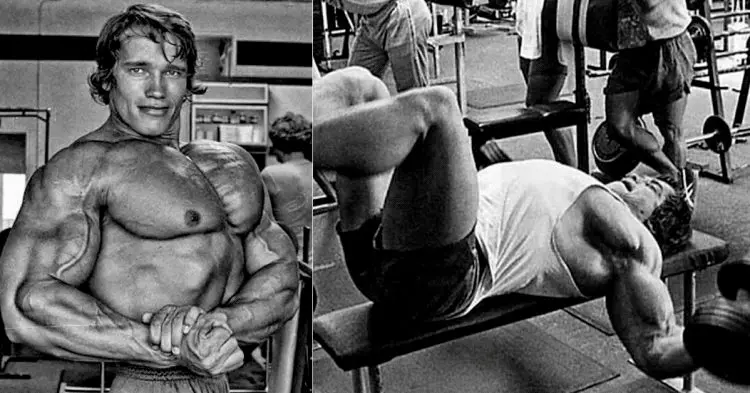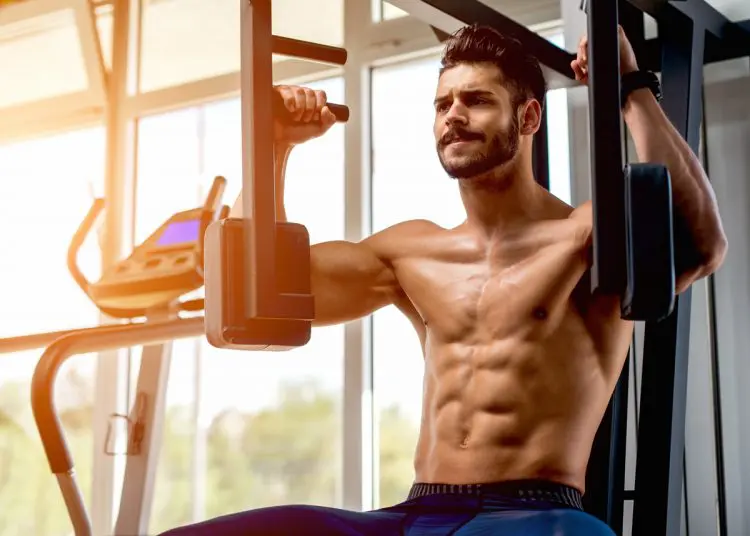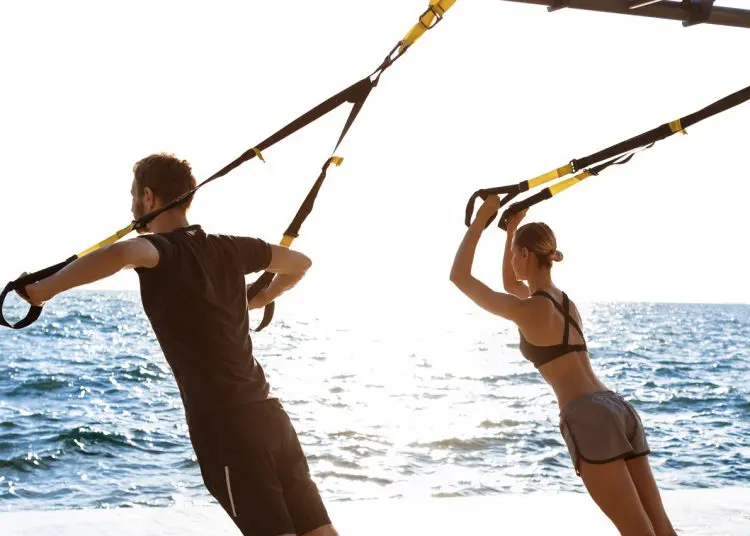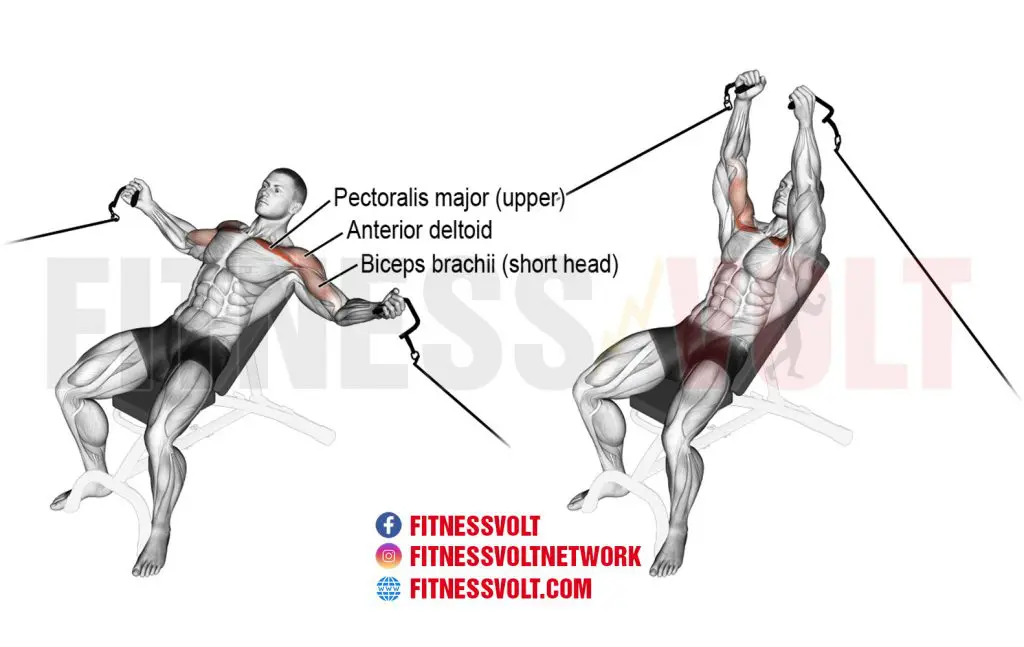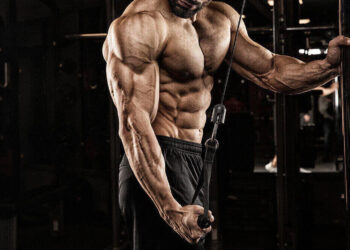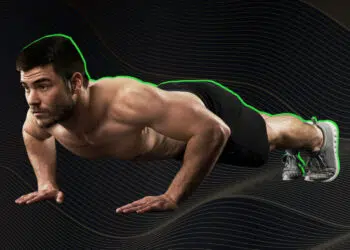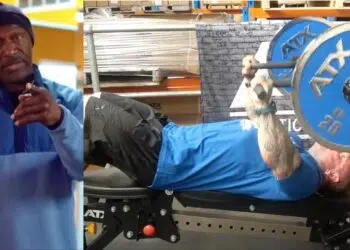Monday might be National Bench Press Day, but as most bodybuilders know, you need more than compound exercises to build the ultimate chest. Isolation exercises are every bit as important and, when it comes to chest isolation movements, cable crossovers are one of the most popular.
Isolation exercises allow you to target different parts of your chest with laser-like precision.
Cable crossovers target your inner chest, giving your pecs the separation that bodybuilders appreciate. You can also alter the angle of your arms to hit your upper, mid, or lower chest. They’re a very versatile exercise.
In addition, cable crossovers are both safe and easy to perform. You can train to failure without worrying about getting crushed by heavy weights. Most gyms put their cable crossover machines in front of mirrors, so you can a) monitor and modify your technique and b) see your pecs in action.
Because cable crossovers are an isolation exercise, they don’t put much stress on your triceps. That’s good news if you’ve fatigued your triceps with heavy bench presses but want to continue working your pecs.
As effective as cable crossovers are, it would be a mistake to do this exercise all the time. Your body will eventually adapt to this exercise, making it less potent. Also, if you work out in a home or garage gym, you may not have access to a cable crossover machine.
Level Up Your Fitness: Join our 💪 strong community in Fitness Volt Newsletter. Get daily inspiration, expert-backed workouts, nutrition tips, the latest in strength sports, and the support you need to reach your goals. Subscribe for free!
The good news is there are plenty of exercises you can do that are every bit as effective as cable crossovers. Add them to your training toolbox to avoid getting stuck in a pec workout rut!
The 12 Best Cable Crossover Alternatives
These exercises work the same muscles as cable crossovers and offer many of the same benefits. Use them anytime you need a break from cable crossovers but still want a great pec workout.
1. Dumbbell flyes
Dumbbell flyes use the same movement as cable crossovers. They’re the ideal cable crossover alternative for home exercisers. The main disadvantage of dumbbell flyes is that there is very little tension at the top of each rep when your arms come together.
This issue aside, dumbbell flyes are a useful exercise that can be used to work all parts of your chest, depending on the angle of your bench. No bench? No problem! You can also do dumbbell flyes on the floor. However, the range of motion is not as great because your upper arms will touch the ground.
Check our guides to:
2. Pec deck machine
Also known as the chest fly machine, the pec deck is a simple but effective way to work your chest. Because the weight is guided on rods, you’re free to focus on pumping out the reps and working to failure in safety.
There are two main types of pec deck. One has handles that you grip with your arms extended, while others involve placing your bent arms against pads. Both are equally effective, so don’t worry if your gym only has one of these machines. If you’re lucky enough to have access to both, try them to see which one works best for you.
Learn how to use the pec deck machine here.
3. Diamond push-ups
While push-ups are a compound exercise, this variation hits your inner chest hard, which is why it’s on our list of cable crossover alternatives. Diamond push-ups involve placing your hands together, so your thumbs and first fingers form a diamond shape. As well as being a useful inner chest exercise, diamond push-ups are also great for building bigger triceps.
Read our diamond push-ups guide to find out how to do this awesome bodyweight exercise.
4. Medicine ball push-ups
This exercise is very similar to diamond push-ups, except you place your hands on top of a medicine ball. This forces you to push inward, which increases inner pec activation. Also, as the ball wobbles, you’ll have to work extra hard to stay stable, further increasing the demands of this exercise.
Make this exercise easier by bending your legs and resting your knees on the floor. Make it more challenging by placing your feet on a step or bench or wearing a weighted vest.
5. Plate press
The plate press is an unusual exercise that requires nothing more than a weight plate to do it. You can do plate presses on the floor – no bench required.
How to do it:
Level Up Your Fitness: Join our 💪 strong community in Fitness Volt Newsletter. Get daily inspiration, expert-backed workouts, nutrition tips, the latest in strength sports, and the support you need to reach your goals. Subscribe for free!
- Lay down and hold a weight plate between the palms of your hands. Press inward to keep the plate in place.
- Push the plate up and then bend your arms, lowering it back down to your chest. Keep pushing inward; it’s that inward pressure that makes this exercise so useful for building your inner chest.
6. Dumbbell press/cable fly combo
Cable crossover machines can be used for more than cable crossovers! This unusual exercise combines dumbbell presses with cable flyes to create a truly unique chest exercise.
How to do it:
- Place a bench in the middle of your cable crossover machine. Put lifting cuffs around your wrists. Attach the cuffs to the low pulleys.
- Take a dumbbell in each hand and lie down.
- Do dumbbell bench presses as normal but press your arms inward against the resistance of the cables. This will increase inner pec activation.
- This exercise can be done using a flat, incline, or decline bench.
7. Dumbbell squeeze press
The dumbbell squeeze press increases inner pec activation. It’s best done with hex-shaped dumbbells, but you can also do it with round dumbbells. The harder you press the weights together, the more effective this exercise becomes.
You won’t need heavy weights for this exercise, which makes it ideal for home exercisers and anyone who finds that heavy pressing causes shoulder pain.
How to do it:
- Lie on a flat, incline, or decline bench with a dumbbell in each hand. Hold the weights over your chest, palms facing inward. Squeeze the weights together.
- Maintaining the inward pressure, bend your arms and lower the weights to your chest. Press them back up and repeat.
- You can do this exercise with a flat, incline, or decline bench and also lying on the floor.
8. Resistance band crossover
No crossover machine? No dumbbells? No problem! You can replicate crossovers with resistance bands. This is an excellent option for home exercisers. However, you will need two resistance bands and somewhere to anchor them, such as the uprights of a squat rack.
You can also use one band and do these with one arm at a time.
How to do it:
- Fix your resistance bands to a shoulder-high anchor. With your back to the anchor, take an end in each hand. Step forward to tension the band, adopt a split stance for stability, and brace your core. Extend your arms out to the side, elbows slightly bent but rigid.
- Flex your shoulders and bring your arms forward and together until your hands meet.
- Open your arms and then repeat.
- Adjust the height of your anchor point and the angle of your arms to work different parts of your chest.
9. Suspension trainer flyes
Suspension trainers like the TRX allow you to replicate most free weight and machine exercises using just your bodyweight, including cable crossovers and dumbbell flyes. Suspension trainer flyes are a great pec builder that also works your core.
How to do it:
- Stand with your back to your suspension trainer anchor point. Take a handle in each hand. Hold the handles in front of you with your arms straight. Adopt a split stance or stand with your feet together as preferred. Brace your core.
- Open your arms and lower your chest down toward the floor.
- Squeeze your arms together to lift your body back up.
- The longer the straps and the closer the handles are to the floor, the harder this exercise will be. Adjust the length of the straps to reflect your current strength.
10. Wide grip dips
A lot of people view dips as a triceps exercise, but they’re also a very useful chest exercise, which compares favorably to the bench press. If you look at the upper arm action during dips, especially with a wide grip, you can easily see that the movement looks a lot like cable crossovers. Dips are a bodyweight exercise, so you don’t need a lot of equipment to do them. But, on the downside, they can be hard on your shoulders, especially if you descend too far.
How to do it:
- Using a wider-than shoulder-width grip, support your weight on straight arms. Your palms should be facing inward.
- Bend your arms, lean forward, and allow your hips to drift backward. Descend until your elbows are bent to around 90-degrees.
- Push yourself back up and repeat.
- Make this exercise easier by using an assisted chin/dip machine or harder by wearing a weighted vest or dipping belt.
11. Floor slide flyes
This challenging bodyweight movement is a useful cable crossover alternative for home exercisers. You’ll need a couple of towels and a smooth surface for this exercise or some Valslides, which are exercise disks that can be used for a range of upper body and lower body exercises.
How to do it:
- Place your towels/disks on the floor and get into the push-up position with your hands on your sliders. Brace your abs.
- Slide your hands apart and lower your chest down toward the floor.
- Squeeze your hands together to return to the starting position.
- Make this exercise easier by bending your legs and resting on your knees.
- Make it more challenging by raising your feet or wearing a weighted vest.
12. Cable flyes
Cable flyes are very similar to cable crossovers, but you do them while lying on an exercise bench. This provides you with lots of support which may mean you can use heavier weights or pump out more reps as you won’t have to rely on your core as much. These differences make cable flyes a handy alternative to crossovers.
Check out our guides to:
Wrapping Up
There is no denying that cable crossovers are an effective exercise. They’re a great way to finish your pec workout and ideal for getting a pump. If you really want to hammer your pecs, try a cable crossover drop set!
As much as we love cable crossovers, we also understand that you can have too much of a good thing. Even the best exercisers lose some of their effectiveness if you do them too often.
Use these 12 cable crossover alternatives to prevent boredom and maintain workout productivity. Each exercise works the same muscles, albeit using different equipment or a slightly different movement. You don’t have to give up cable crossovers, but you’ll get better results from your training if you don’t rely on them too much and include plenty of variety in your workouts.
Interested in measuring your progress? Check out our strength standards for Bench Press, Incline Dumbbell Fly, Push Ups, and more.

